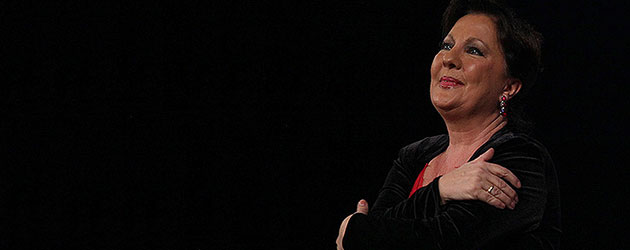Text: Pablo San Nicasio Photos: Rafael Manjavacas
Teatro de la Zarzuela 3-12-2012
December 8th, 2012
WE JUST HAD TO BE THERE
Flamenco is a somewhat irregular genre when it comes to artists who have passed away. When they’ve recently left us, we gush and go overboard reminding everyone how great they were. But a short time later, when you have to go out on stage to honor the image and memory of an individual who has been so important, it gets complicated. Perhaps it’s because flamenco is such an intimate art-form.
It’s been almost a year since Enrique del Melchor left us and, although there’s been time to adjust dates and calendars, some of his peers have forgotten he was a first-class guitarist, there have been few like him. It happened with Morao, and now with Enrique. In the end, it’s the guitar that comes out losing when a worthy ambassador of the cause is not given his due. And believe me, this won’t be the last time.
The family of flamenco, and in particular of guitar, should be more open, less concerned about who is promoting what event. These people are disappearing…everyone says they are in our hearts, but we need to be more demonstrative and do these things without prodding.
Even so, the flamenco marathon took us through nearly three and a half interesting hours. Enrique de Melchor left behind plenty of friends. And the audience also rose to the occasion – there was a huge crowd of fans and professionals who knew why they were there. To pay tribute and show their much-needed support for the late guitarist.
The first part was noteworthy because young artists, most of whom had not had contact with Enrique de Melchor, really put themselves into it. Javier Conde is often faulted for not composing his own material. Ok, true enough, but he’s one fantastic interpreter. As young as he is, he’s already given concerts the world over and has quite a solid background in music. If he doesn’t compose, it’s because there are other less-travelled roads. His classic soleá ran deep and strong. The rondeña, Paco de Lucía’s “La Cueva del Gato”, blew away the metronome. And even so he had time to phrase the music with no problem.
María Toledo put a gypsy spin on her natural refined voice to interpret soleá and alegrías, while Gabriel de la Tomasa carried on where his father left off for malagueñas and fandangos. He woke us all up with his unamplified voice, exhibiting surprising vocal capacity to end his performance.
The evening reached its guitar pinnacle when the much-admired Pedro Sierra proved to be the best in a program of heavyweights. And he wasn’t even on the program. Sierra was the author of two masterworks of grand concepts, technique and strength. A modulared farruca and a rondeña (the form most heard throughout the show) were top-of-the-line. We’re missing so much nowadays with so few guitar recitals.
Before intermission, José Mercé closed the first part “despite a cold. I’m here because I had to be, even if I were dying”. And we appreciated the effort. Soleá went from more to less with an interesting fandango por soleá. He ended with bulerías without a great deal of energy, probably due to the cold.
Intermission brought heartfelt words from Paco de Lucía projected from a far-away camera, followed by flautists Juan Parrilla and Jorge Pardo. Both very flamenco with their soleá and tarantas solos, ending with a bang with “Danza de los Gitanos”, a work of Enrique de Melchor’s who, as occurred with the genius from Algeciras, was a pioneer in the use of wind instruments in his group.
The stratospheric Gerardo Núñez played “Por el Arco”, a rondeña and bulería fantasy that continues to awe the most jaded listener. Three examples of concert guitar, a half-hour in all. It seemed like too little for someone who upped the guitar ante so much, because Enrique did not only accompany.
We were running late, so it was only possible to see the ever-energetic Menese with cabales, and the tientos and cantiñas of Carmen Linares, excellent from beginning to end, with the accelerator fully engaged.
Vicente Soto closed, extraordinary with his tonás, full of strength and sincerity with verses adapted to the occasion. Very complete and measured in the bulerías. Instead of ten minutes of verses recalling the yellowed pages of Jerez glory days, he gave everything in just five minutes…all the better.
We can only hope the massive response translates into an equally strong boost for the widow of the Seville maestro. Considering the taxes now in effect, that’s no small thing. From on high, Enrique and his friends surely enjoyed the show, and he was able to get over the recent defeat of his favorite soccer team just a few days earlier.
